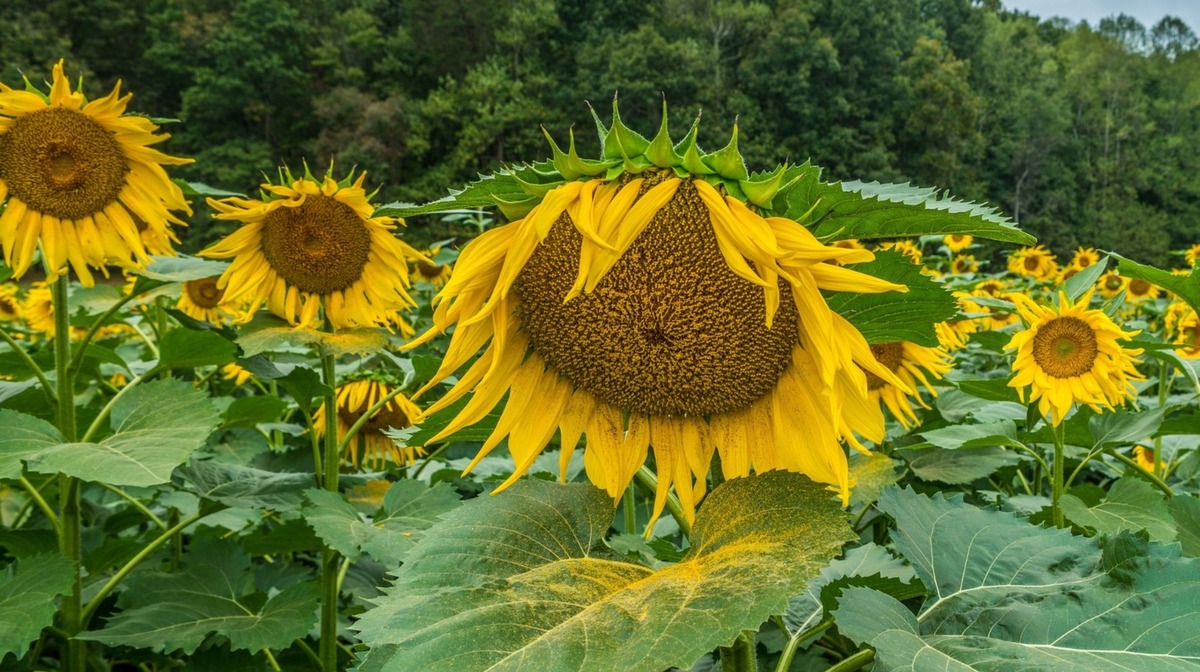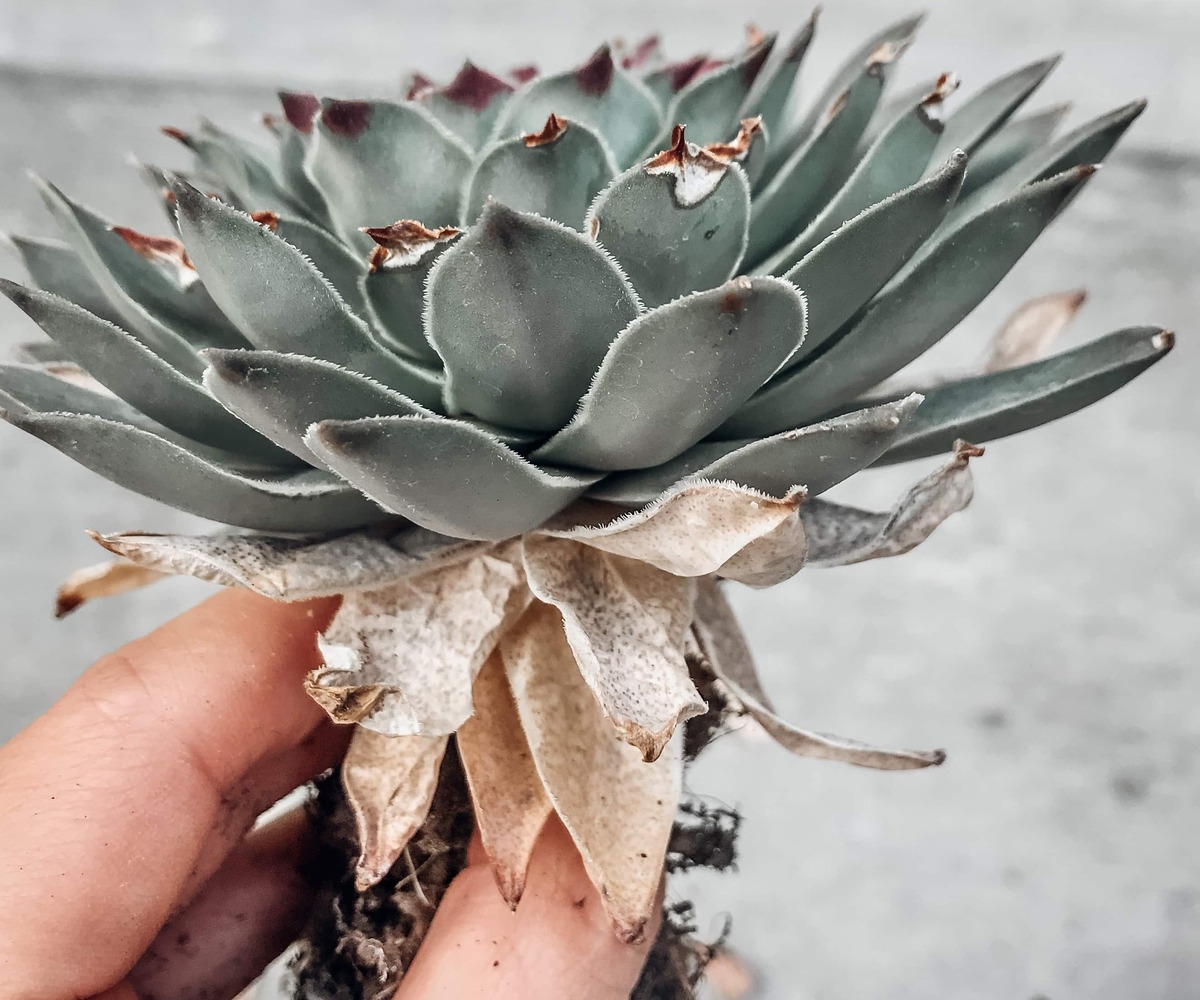Home>Types of Gardening>Ornamental Gardening>Why Are My Sunflowers Drooping


Ornamental Gardening
Why Are My Sunflowers Drooping
Published: December 18, 2023
Discover the reasons behind drooping sunflowers in ornamental gardening. Learn how to revive and care for your sunflowers to keep them healthy and vibrant.
(Many of the links in this article redirect to a specific reviewed product. Your purchase of these products through affiliate links helps to generate commission for Chicagolandgardening.com, at no extra cost. Learn more)
Table of Contents
**
Introduction
**
Sunflowers, with their vibrant blooms and towering stalks, are a beloved addition to any garden. These iconic flowers, known for their ability to track the sun throughout the day, exude a sense of warmth and vitality. However, as a gardener, it can be disheartening to witness sunflowers drooping, appearing less lively than their usual grandeur. When faced with this issue, it's important to understand the various factors that can contribute to the drooping of sunflowers. By delving into the environmental, watering, and nutrient-related aspects, as well as the potential influence of pests, diseases, and genetics, we can unravel the mystery behind drooping sunflowers and take appropriate measures to restore their vigor.
Sunflowers, with their striking appearance and captivating behavior, hold a special place in the hearts of gardeners and nature enthusiasts alike. As we explore the potential reasons behind drooping sunflowers, it's essential to approach the issue with a blend of curiosity and problem-solving determination. By understanding the intricate interplay of environmental conditions, plant physiology, and external threats, we can embark on a journey to revive the splendor of these magnificent flowers. Let's embark on this exploration to uncover the secrets behind drooping sunflowers and pave the way for their resurgence.
Environmental Factors
The environment in which sunflowers thrive plays a pivotal role in their overall health and vitality. When assessing the potential causes of drooping sunflowers, it’s crucial to consider the impact of environmental factors. Exposure to extreme weather conditions, such as strong winds and heavy rainfall, can exert stress on sunflowers, leading to a drooping appearance. Additionally, inadequate sunlight due to shading from nearby structures or plants can impede the sunflower’s natural growth and contribute to drooping.
Furthermore, soil quality and composition significantly influence the well-being of sunflowers. Poor drainage, compacted soil, or nutrient deficiencies can hinder the plant’s ability to absorb essential elements, resulting in weakened stems and drooping blooms. Understanding the specific environmental conditions in which sunflowers are cultivated is essential for diagnosing and addressing potential issues related to drooping.
As stewards of our gardens, it’s essential to create an environment that fosters the optimal growth of sunflowers. By mitigating the impact of adverse weather, ensuring adequate sunlight exposure, and maintaining well-draining, nutrient-rich soil, we can minimize the risk of drooping and promote the flourishing of these radiant flowers.
Watering Issues
Proper watering is fundamental to the health and vitality of sunflowers. Inadequate or excessive moisture levels in the soil can lead to a range of issues, including drooping stems and wilting blooms. When sunflowers are deprived of sufficient water, their stems may become limp, causing the entire plant to appear droopy. Conversely, overwatering can lead to root rot and hinder the plant’s ability to uptake nutrients, resulting in similar symptoms of wilting and drooping.
It’s essential for gardeners to strike a balance in watering their sunflowers, ensuring that the soil remains consistently moist but not waterlogged. Factors such as climate, soil composition, and sunflower variety should be considered when devising a watering regimen. During periods of intense heat or drought, increased watering may be necessary to sustain the sunflowers’ hydration and prevent drooping. Conversely, in humid or cooler conditions, moderation in watering is key to preventing waterlogged soil and subsequent drooping.
By closely monitoring the soil moisture and adjusting watering practices based on environmental conditions, gardeners can mitigate the risk of drooping sunflowers and promote robust, upright growth. Additionally, employing mulching techniques can aid in moisture retention, further supporting the overall health and resilience of sunflowers.
Nutrient Deficiency
The availability of essential nutrients is paramount for the optimal growth and development of sunflowers. A deficiency in key nutrients can manifest in various symptoms, including drooping leaves and lackluster blooms. Nitrogen, phosphorus, and potassium are among the vital elements that play a crucial role in sustaining the vigor and structural integrity of sunflowers. A lack of these nutrients can result in stunted growth and weakened stems, ultimately leading to a drooping appearance.
Gardeners should be attentive to signs of nutrient deficiency, such as yellowing leaves or poor overall plant vitality, as these indicators can point to underlying issues affecting the sunflowers’ nutrient uptake. Conducting soil tests to assess nutrient levels and pH balance can provide valuable insights into the specific deficiencies that may be contributing to the drooping of sunflowers. Once identified, targeted fertilization and soil amendment strategies can be employed to rectify nutrient imbalances and bolster the overall health of the plants.
Furthermore, organic practices, such as composting and incorporating natural fertilizers, can enrich the soil with a spectrum of essential nutrients, fostering a nutrient-rich environment that supports the robust growth of sunflowers. By addressing and rectifying nutrient deficiencies, gardeners can alleviate the risk of drooping and cultivate sunflowers that exhibit vibrant blooms and sturdy, upright stems.
Pests and Diseases
Pests and diseases pose potential threats to the well-being of sunflowers, often manifesting in symptoms that include drooping stems and deteriorating foliage. Common pests such as aphids, caterpillars, and mites can inflict damage on sunflowers, causing stress to the plants and contributing to a drooping appearance. Additionally, fungal infections and diseases, including powdery mildew and root rot, can compromise the overall health and structural integrity of sunflowers, leading to wilting and drooping of the stems.
Vigilance is key in identifying and addressing pest infestations and diseases that may be impacting sunflowers. Regular inspection of the plants for signs of pest activity, such as discolored or distorted leaves, can aid in early detection and prompt intervention. Employing natural pest control methods, such as introducing beneficial insects or using organic pest repellents, can help mitigate pest-related stress on sunflowers and prevent drooping.
To combat diseases, practicing good sanitation, ensuring proper air circulation, and avoiding overwatering can help minimize the risk of fungal infections and other diseases that can contribute to the drooping of sunflowers. Furthermore, prompt removal and disposal of infected plant material can prevent the spread of diseases within the garden, safeguarding the overall health of sunflowers.
By implementing proactive measures to address and prevent pest infestations and diseases, gardeners can create a resilient and thriving environment for sunflowers, reducing the likelihood of drooping and promoting the enduring beauty of these majestic blooms.
Genetics
The genetic makeup of sunflowers plays a significant role in determining their growth habits and overall appearance. Different sunflower varieties exhibit distinct characteristics, including varying stem strength and resilience to environmental stressors. Some genetic traits may predispose certain sunflowers to exhibit a propensity for drooping, especially under specific environmental conditions or cultural practices.
When selecting sunflower varieties for cultivation, it’s important for gardeners to consider the inherent traits and growth habits associated with each type. Certain varieties may naturally display a more upright and sturdy growth pattern, while others may have a tendency to exhibit a more relaxed or drooping posture, particularly as the blooms mature.
Understanding the genetic predispositions of specific sunflower varieties can provide valuable insights into the expected growth habits and potential tendencies for drooping. By aligning the choice of sunflower varieties with the desired aesthetic and growth characteristics, gardeners can proactively manage the appearance of sunflowers in their garden, selecting varieties that are less prone to drooping and better suited to their cultivation environment.
While genetics can influence the propensity for drooping in sunflowers, it’s important to note that proactive management practices, including attentive environmental stewardship, proper watering, and nutrient optimization, can significantly mitigate the impact of genetic predispositions and promote the robust growth and visual appeal of sunflowers.
Conclusion
As we’ve delved into the multifaceted factors that can contribute to the drooping of sunflowers, it becomes evident that a holistic approach to sunflower care is essential for fostering their optimal health and vibrancy. Environmental conditions, including exposure to extreme weather and soil quality, exert a profound influence on the well-being of sunflowers, necessitating conscientious management to mitigate the risk of drooping. Furthermore, attentive watering practices, tailored to the specific needs of sunflowers and responsive to environmental cues, are instrumental in sustaining the plants’ hydration and structural integrity.
Nutrient deficiencies, a common underlying cause of drooping in sunflowers, underscore the importance of soil enrichment and targeted fertilization to address potential imbalances and fortify the plants’ vitality. Additionally, vigilance against pests and diseases, coupled with proactive measures to prevent infestations and infections, is crucial for safeguarding sunflowers against stress-induced drooping and promoting their enduring splendor.
Understanding the genetic predispositions of sunflower varieties enables gardeners to make informed choices that align with their cultivation goals, selecting varieties that exhibit resilient growth habits and are well-suited to their specific growing environment. By integrating these insights and practices into our approach to sunflower care, we can cultivate a thriving and resplendent garden adorned with sunflowers that stand tall and exude timeless allure.



